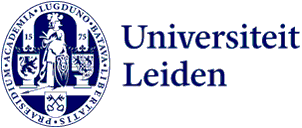
‘Build resilience in traumatised children and young people’
Many children experience trauma and if they are unable to deal with it properly, it can have a huge personal and societal effect. Building resilience in vulnerable children and young people should therefore have the highest priority. This is the message of Anne-Laura van Harmelen, Professor of Brain, Safety and Resilience, in her inaugural lecture on 27 June.
First of all, what kind of childhood trauma does this mean?
‘Childhood trauma is a broad concept. About half of all children and young people experience something unpleasant at some point. This could be an incident like a car accident or a chronic experience like being bullied or abused. Childhood trauma is often a clustered problem, especially within the family environment: financial problems or poverty can cause stress and depression in parents and this can affect their children’s upbringing. Childhood trauma is one of the strongest predictors of mental health problems in adolescence. Over a third of the mental health problems that arise in adolescence can be traced back to childhood trauma. Given the current problems in youth care, it is essential that children and young people are resilient after childhood trauma and that this is made a public health priority.’
‘Childhood trauma is one of the strongest predictors of mental health problems in adolescence.’
Why is your inaugural lecture called ‘There’s no such thing as resilience’?
‘I did this for several reasons. In my inaugural lecture I discuss the facts and fables about the subject. Resilience doesn’t exist as a personal trait that always protects someone from the effects of stress. But it does exist as a process that is supported by genetic, neurobiological and socio-environmental factors and that develops over time after stressful experiences. I show that resilience can vary from person to person and can change over time. And that the building blocks of resilience can depend on their context. In my inaugural lecture I therefore call for more precision in the definition of resilience in future research.’
How are you researching resilience after childhood trauma?
‘We know that there are important genetic factors but that there are also important social factors that support resilience. In our research my group is looking at how all these factors are connected, for example by researching the effect of friendship in adolescence on stress responses in the brains of young people with traumatic experiences. We are investigating what the underlying mechanisms of resilience might be. If we have a better idea of these mechanisms, we may be able to simulate them in therapy or in school counselling, for instance.’
Professors Anne-Laura van Harmelen and Marieke Liem are both research leaders of the Social Resilience and Security interdisciplinary programme in which researchers from different disciplines – such as childhood and youth studies, law and philosophy – are working together to make a safer environment for all.
